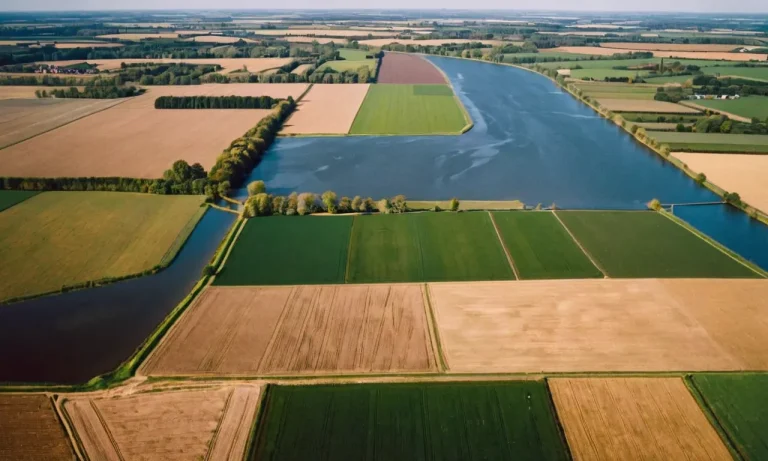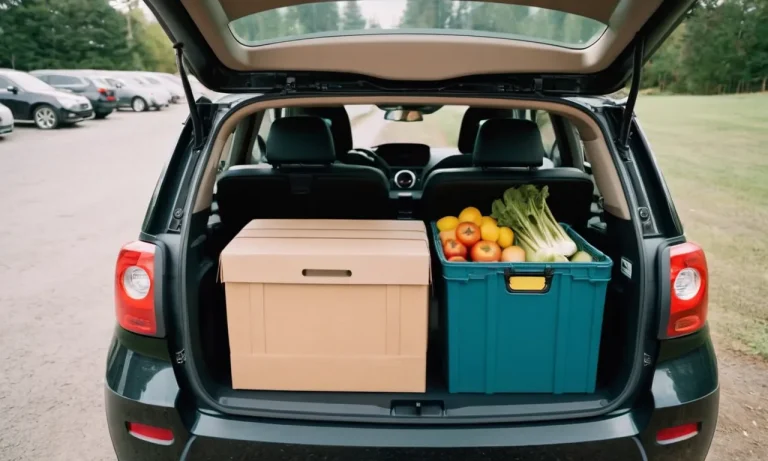How To Stop Needing The Toilet On Long Journeys
Needing the bathroom frequently during long trips can be annoying and inconvenient. If you’re short on time, here’s a quick answer: avoid caffeine and alcohol, stay hydrated with water, plan bathroom breaks, do pelvic floor exercises, and wear loose clothing.
In this comprehensive guide, we will cover proven strategies to help you stop needing the toilet so often when traveling, so you can sit back, relax, and enjoy the ride without frustrating pit stops.
Limit Fluid Intake That Irritates the Bladder
One effective way to stop needing the toilet on long journeys is to limit fluid intake that irritates the bladder. Certain fluids can act as diuretics, causing increased urine production and putting pressure on the bladder.
By reducing the intake of these fluids, you can minimize the need to urinate frequently.
Cut back on caffeine
Caffeine, found in coffee, tea, energy drinks, and some sodas, is a known diuretic. It stimulates the kidneys to produce more urine, leading to increased bladder activity. To reduce the need to use the restroom during long journeys, it’s best to cut back on caffeine consumption.
Opt for decaffeinated versions of your favorite beverages or try herbal teas instead.
Avoid alcohol and carbonated drinks
Alcohol and carbonated drinks can also irritate the bladder and increase urine production. Alcohol acts as a diuretic, while carbonated drinks can cause bloating and discomfort. To prevent frequent bathroom breaks, it’s advisable to avoid these drinks altogether or consume them in moderation.
Drink water moderately
While it may seem counterintuitive, drinking water in moderation can actually help reduce the need to use the toilet on long journeys. Drinking too much water can overfill the bladder and lead to more frequent urination. It’s important to stay hydrated, but be mindful of your water intake.
Sip water slowly and avoid drinking large quantities at once. This will help prevent excessive bladder pressure and the urge to urinate frequently.
For more information on bladder health and tips to reduce the need to use the toilet on long journeys, you can visit Mayo Clinic’s website. They provide valuable insights into managing bladder function and offer practical advice for a comfortable travel experience.
Plan Regular Bathroom Breaks
When embarking on a long journey, it’s important to plan regular bathroom breaks to avoid the discomfort of needing to use the toilet during the trip. Depending on the length of the journey, it’s recommended to schedule breaks every two to three hours.
This will not only help alleviate the urge to use the restroom but also give you an opportunity to stretch your legs and refresh your mind.
Factors to Consider
Several factors should be taken into account when planning bathroom breaks. First, consider the duration of the journey. Shorter trips may only require one or two breaks, while longer trips may necessitate more frequent stops.
Second, consider the availability of rest stops or gas stations along your route. It’s a good idea to research and identify the locations of these facilities in advance, ensuring that you won’t be caught in a situation where you’re unable to find a suitable place to stop.
Timing Your Breaks
Timing your bathroom breaks is essential in order to maintain a smooth and efficient journey. Try to time your breaks with meal or snack stops, so you can take care of multiple needs at once. Additionally, aim to take breaks during less busy times of the day to avoid long queues and delays.
Stay Hydrated
While it may seem counterintuitive, staying hydrated during long journeys can actually help reduce the need to use the toilet. Dehydration can lead to concentrated urine, causing the bladder to fill up more quickly.
By drinking plenty of water, you can dilute your urine and reduce the frequency of bathroom visits.
Remember: It’s important to strike a balance between staying hydrated and avoiding excessive consumption of liquids, especially caffeinated or carbonated drinks, which can increase the need to urinate.
Do Pelvic Floor Exercises
If you want to stop needing the toilet on long journeys, one effective solution is to do pelvic floor exercises. These exercises target the muscles that support the bladder and can help improve bladder control.
By strengthening the pelvic floor muscles, you can reduce the urge to urinate and increase your ability to hold urine for longer periods of time.
What are pelvic floor exercises?
Pelvic floor exercises, also known as Kegel exercises, involve contracting and relaxing the muscles in your pelvic floor. These exercises can be done discreetly anywhere, anytime, as they do not require any special equipment.
To perform a pelvic floor exercise, simply squeeze the muscles you would use to stop the flow of urine or prevent passing gas. Hold the contraction for a few seconds, then release and relax. Repeat this process several times.
Benefits of pelvic floor exercises
Pelvic floor exercises offer a range of benefits beyond just reducing the need to use the toilet on long journeys. These exercises can help prevent and treat urinary incontinence, which is the involuntary leakage of urine. They can also improve sexual function and enhance orgasm intensity.
Additionally, pelvic floor exercises can aid in postpartum recovery by strengthening the muscles that may have been weakened during pregnancy and childbirth.
How to incorporate pelvic floor exercises into your routine
It’s important to make pelvic floor exercises a regular part of your routine to see the best results. Aim to do them at least three times a day, with each session consisting of 10 to 15 contractions. You can gradually increase the duration and intensity of the exercises as your muscles become stronger.
To help remember to do your pelvic floor exercises, try associating them with a daily activity, such as brushing your teeth or checking your email.
Additional tips for bladder control
In addition to doing pelvic floor exercises, there are other strategies you can try to improve bladder control on long journeys. These include:
- Drinking plenty of water throughout the day to stay hydrated, but avoiding excessive fluids before a journey.
- Avoiding caffeine and alcohol, as these can irritate the bladder and increase urine production.
- Planning your journey with regular bathroom breaks in mind.
- Practicing relaxation techniques, such as deep breathing, to help reduce the urge to urinate.
- Wearing absorbent undergarments or using protective pads as a backup measure.
Remember, it’s always a good idea to consult with a healthcare professional if you have persistent issues with bladder control. They can provide personalized advice and recommend additional treatments or interventions if needed.
For more information on pelvic floor exercises and bladder control, you can visit websites such as Mayo Clinic or NHS.
Wear Loose, Comfortable Clothing
When embarking on a long journey, one of the most important things to consider is wearing loose and comfortable clothing. Tight clothes can put pressure on the bladder and lead to discomfort and the need to use the toilet more frequently.
Opt for loose-fitting pants, skirts, or dresses that allow for easy movement and don’t constrict the abdominal area.
Additionally, it is advisable to wear breathable fabrics such as cotton or linen, as they help to regulate body temperature and prevent excessive sweating. This can be particularly beneficial during warmer months or when traveling to destinations with higher temperatures.
Why does loose clothing help?
Wearing loose clothing has several benefits when it comes to reducing the need to use the toilet on long journeys. Firstly, it allows for better blood circulation, preventing the buildup of fluid in the legs and feet, which can contribute to increased urine production.
Secondly, loose clothing reduces pressure on the bladder, minimizing the urge to urinate frequently. Finally, loose clothing provides greater comfort overall, making the journey more enjoyable and reducing stress on the body.
It’s important to note that while loose clothing can help alleviate the need to use the toilet frequently, it is also crucial to stay properly hydrated during long journeys. Dehydration can lead to various health issues, including urinary tract infections.
Therefore, it is recommended to drink plenty of water and avoid excessive consumption of diuretic beverages such as coffee and alcohol.
For more information on maintaining proper hydration during travel, you can visit the Centers for Disease Control and Prevention (CDC) website, which provides comprehensive guidelines for safe and healthy travel.
Use the Bathroom Before Departing
One of the most effective ways to stop needing the toilet on long journeys is to make sure you use the bathroom before you leave. This may seem like an obvious step, but it is often overlooked. By emptying your bladder before you start your journey, you can reduce the need to stop for bathroom breaks along the way.
Research has shown that the average person can hold their urine for about two to four hours. However, this can vary depending on various factors such as age, hydration levels, and bladder capacity. It is important to note that holding urine for too long can lead to discomfort and potential health issues, so it is best to plan your bathroom breaks accordingly.
If you are traveling in a group, it is a good idea to coordinate bathroom breaks so that everyone has the opportunity to use the facilities before setting off. This can help minimize the number of stops along the way and ensure a smoother journey for everyone involved.
Additionally, if you are traveling by car, it is recommended to take advantage of rest areas and service stations along the route. These facilities are specifically designed to provide bathroom facilities for travelers and can be a convenient option for those needing to use the toilet.
Conclusion
With some planning and lifestyle adjustments, you can travel confidently without needing the toilet as often. Limit irritating fluids, stay hydrated with water, take regular breaks, exercise your pelvic floor, and wear loose clothing for comfort.
Put these tips into action so you can fully enjoy your next long trip!








